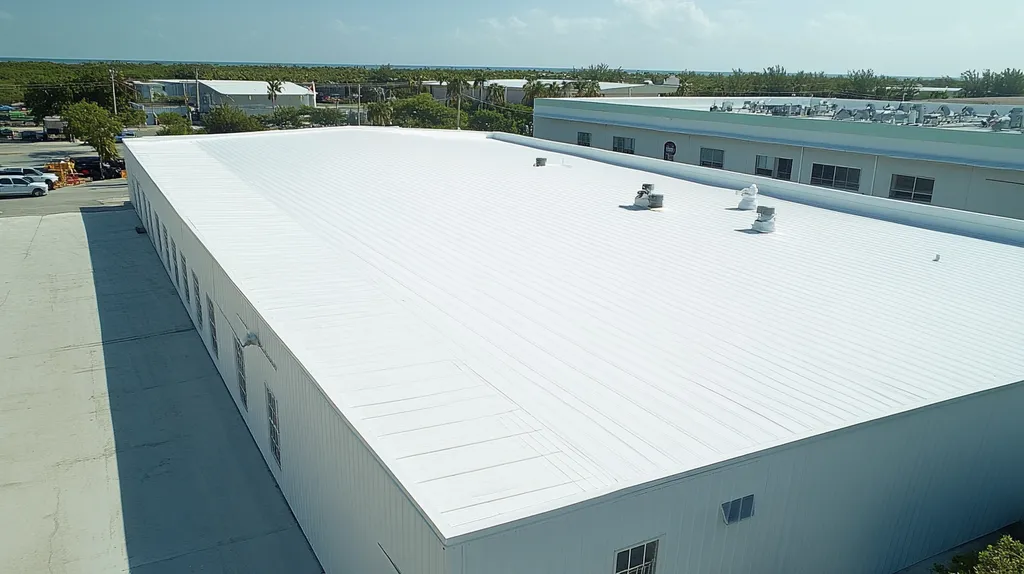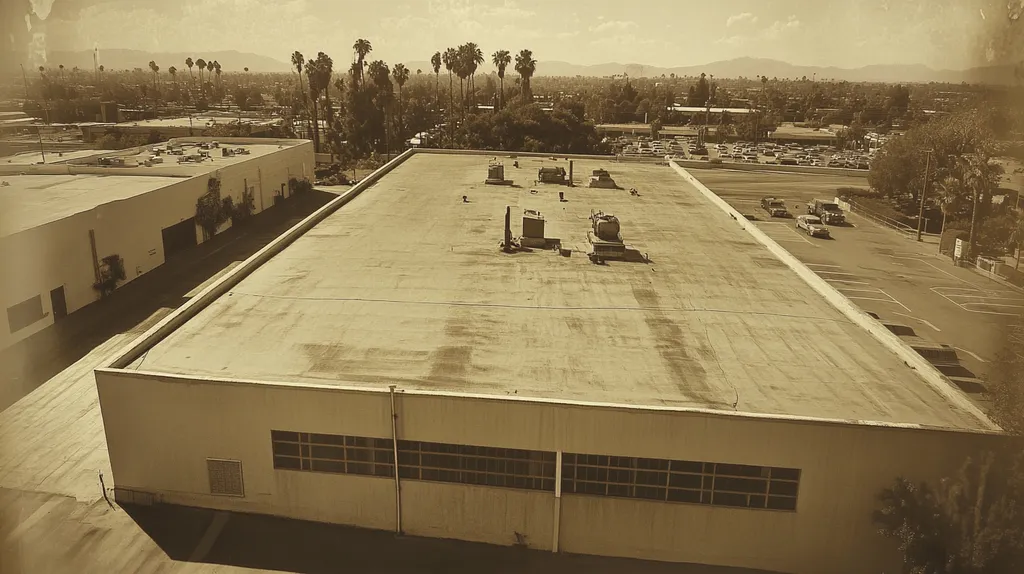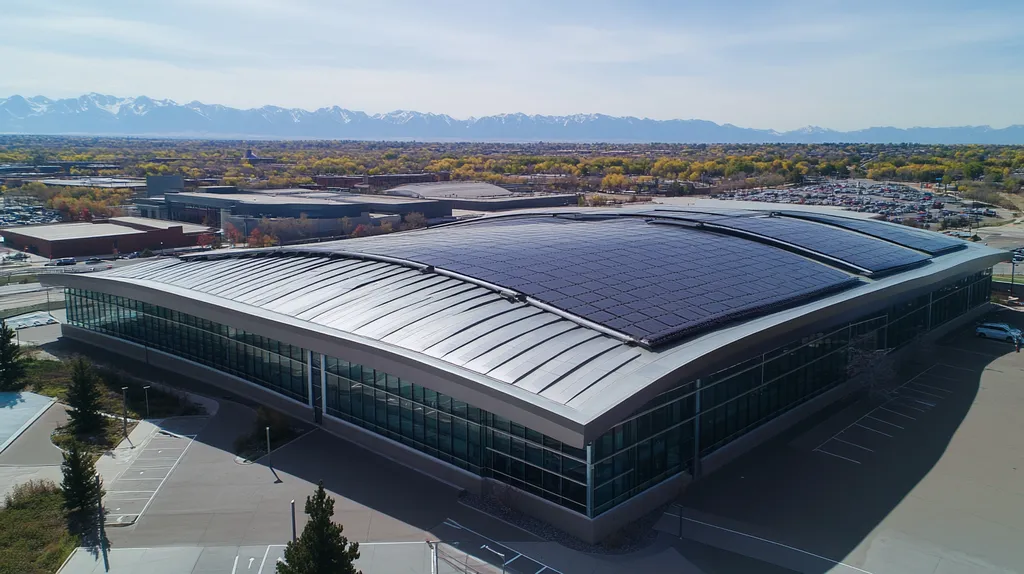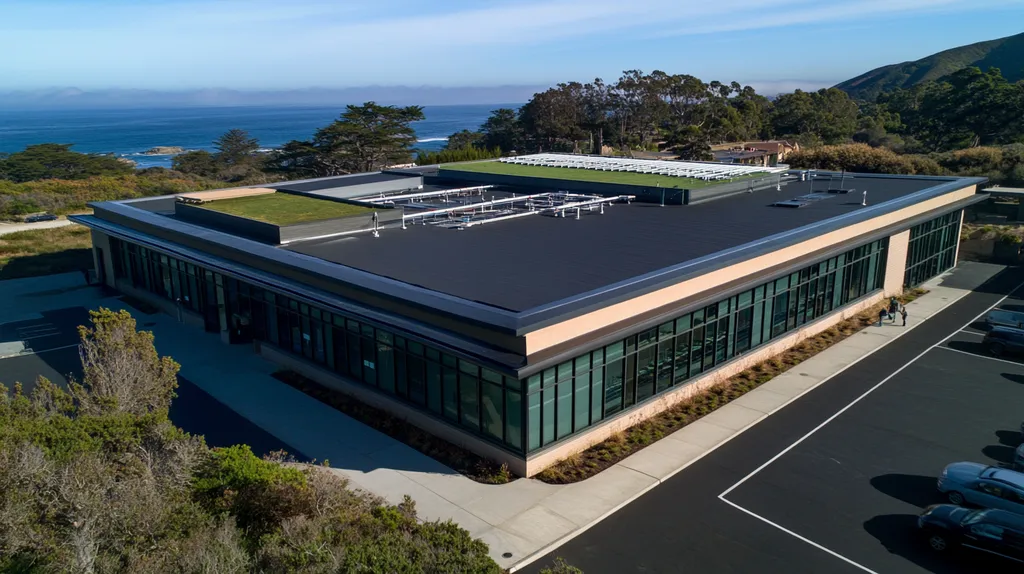Welcome to today’s Battle Royale featuring two roofing heavyweights: “Fall Protection Systems” in the east corner versus “Safety Harnesses” in the west!
Tonight’s showdown pits these contenders against each other across six punishing rounds designed to test every aspect of their performance for Safety Guidelines for New Employees in Roofing Industry.
At stake? Millions in potential costs, decades of building protection, and the critical performance demands of modern commercial and industrial facilities.
Our professional judging panel will evaluate each round on technical merit, real-world performance, and value delivery. After all six rounds, we’ll declare our ultimate champion.
Ladies and gentlemen, facility managers and building owners… it’s time to rumble!
ROUND 1: INITIAL COSTS & INSTALLATION
When it comes to rooftop safety, the financial stakes couldn’t be higher. Falls remain the leading cause of fatalities in construction, with roofing consistently ranking among the most dangerous occupations. Property owners must carefully weigh the initial investment and implementation requirements of fall protection systems against safety harnesses to ensure both worker safety and operational efficiency.
Material Expenses
Fall protection systems represent a significant upfront investment, typically ranging from $10,000 to $50,000 for comprehensive coverage of a commercial roof. These systems include permanent guardrails, anchor points, and horizontal lifeline systems that become part of the building’s infrastructure.
Safety harnesses present a lower initial cost, averaging $150-300 per worker for basic equipment. However, proper implementation requires additional components including lanyards, rope grabs, and anchor points that must support 5,000 pounds per attached worker. (source: Holcim Elevate)
While fall protection systems demand higher upfront costs, their permanent nature and ability to protect multiple workers simultaneously create better long-term value. In this category, fall protection systems earn the “ADVANTAGE” through superior cost efficiency over time.
Installation Complexity
Installing permanent fall protection systems requires significant planning and engineering expertise. These systems need structural assessment, roof penetration considerations, and precise installation to ensure they meet safety standards.
Safety harnesses require minimal installation beyond securing temporary anchor points. Training workers on proper harness use and inspection takes hours rather than days or weeks of construction work.
For installation complexity, safety harnesses claim a clear “ADVANTAGE” due to their straightforward implementation and minimal structural requirements.
Project Timeline
Fall protection system installation can extend project timelines by 2-4 weeks, depending on roof size and complexity. This includes engineering reviews, material procurement, and installation coordination with other trades.
Safety harnesses enable immediate project startup once basic training is complete. Their deployment requires minimal preparation time, allowing work to begin as soon as anchor points are verified.
The rapid deployment capability of safety harnesses earns them the “ADVANTAGE” in project timeline considerations.
ROUND 1 WINNER: SAFETY HARNESS
ROUND 2: DURABILITY & LIFESPAN
In commercial roofing, the longevity of safety equipment directly impacts both worker protection and bottom-line costs. Every year, thousands of roofing professionals depend on these systems to prevent catastrophic falls. The durability and reliability of fall protection equipment isn’t just about maintenance schedules – it’s about ensuring consistent worker safety across years of daily use.
Weather Resistance & Material Integrity
Fall protection systems utilize industrial-grade materials specifically engineered for exterior conditions. These permanent installations typically incorporate galvanized steel, weather-resistant aluminum, and UV-stabilized components that maintain structural integrity for 15-20 years under normal conditions.
Safety harnesses face constant exposure to UV radiation, moisture, and physical stress during regular use. Even premium harnesses require replacement every 5 years, regardless of visible wear, to maintain safety compliance.
The superior weather resistance and longer service life of permanent systems earns them a clear “ADVANTAGE” in this category.
Maintenance Requirements
Employers must provide and maintain fall protection systems that meet stringent safety requirements. Permanent installations typically need only annual professional inspections and occasional hardware tightening to remain fully functional. (source: RoofSnap)
Safety harnesses demand frequent inspections – before each use and monthly documented checks. Webbing, stitching, and hardware must be carefully examined for signs of wear, with immediate replacement required if any defects are found.
The minimal maintenance needs of permanent systems compared to harnesses’ intensive inspection requirements gives fall protection systems the “ADVANTAGE”.
Long-Term Cost Effectiveness
Fall protection systems represent a one-time investment that protects multiple workers simultaneously. Their extended lifespan and minimal maintenance requirements result in lower per-year costs when averaged over their service life.
Safety harnesses incur ongoing expenses through regular replacements, inspection time, and documentation requirements. A typical commercial roofing operation may need to replace its harness inventory 3-4 times during the lifespan of a single permanent system.
The superior long-term value proposition of permanent systems earns them another clear “ADVANTAGE” in cost effectiveness.
ROUND 2 WINNER: Fall Protection Systems
ROUND 3: PERFORMANCE FACTORS
Performance factors in roofing safety directly impact worker survival rates and operational efficiency. With falls remaining the leading cause of construction fatalities, choosing between fall protection systems and safety harnesses can mean the difference between life and death. The right safety solution must balance effectiveness, usability, and practical implementation to create a genuinely safer work environment.
Effectiveness in Preventing Falls
Fall protection systems create passive safety through permanent physical barriers that prevent workers from accessing fall hazards. These systems eliminate the possibility of falls through guardrails, safety nets, and warning lines that function regardless of worker behavior.
Safety harnesses rely on active worker participation and proper usage to prevent injuries. While effective when properly worn and anchored, harnesses cannot prevent the initial fall and require perfect compliance to function as intended.
The passive protection offered by permanent systems provides superior real-world effectiveness compared to harness-dependent solutions. Fall protection systems earn the clear “ADVANTAGE” in preventing falls.
Ease of Use and Mobility
Make sure the work area remains clean, organized and clearly marked to maximize the effectiveness of fall protection systems. While these systems provide excellent protection, they can restrict worker movement and access to certain roof areas. (source: Dumpsters.com)
Safety harnesses offer greater mobility and flexibility, allowing workers to access most roof areas while maintaining protection. The trade-off comes in the form of more frequent adjustments and equipment checks throughout the workday.
The superior mobility and simpler implementation of safety harnesses earns them the “ADVANTAGE” in ease of use considerations.
Environmental Performance
Fall protection systems maintain consistent performance across various weather conditions. Their fixed nature and durable materials ensure reliable protection regardless of rain, wind, or temperature extremes.
Safety harnesses can become more difficult to adjust and properly secure in adverse weather. Wet conditions particularly impact harness effectiveness by making equipment slippery and harder to inspect.
The reliable all-weather performance of permanent systems gives fall protection systems the clear “ADVANTAGE” in this category.
ROUND 3 WINNER: Fall Protection Systems
ROUND 4: MAINTENANCE REQUIREMENTS
Proper maintenance of fall protection equipment directly impacts worker safety and liability exposure in commercial roofing. Each year, thousands of workplace injuries occur due to improperly maintained safety equipment. Understanding the maintenance demands of different fall protection options helps facility managers create sustainable safety programs while controlling long-term costs.
Inspection Frequency
Fall protection systems require quarterly inspections of all components including anchor points, cables, and connection hardware. These inspections must be documented and typically take 4-6 hours per roof section to complete thoroughly.
Professional inspection services verify structural integrity and identify potential failure points before they compromise safety. Many facility managers integrate these inspections with regular roof maintenance to optimize costs.
Safety harnesses demand daily visual inspections before each use, plus detailed monthly examinations. This frequent inspection schedule creates significant administrative overhead and relies heavily on individual worker compliance.
The more predictable and manageable inspection schedule of fall protection systems earns them the “ADVANTAGE” in this category.
Documentation Requirements
Fall protection systems require maintaining detailed inspection logs, repair records, and certification documentation. Most facilities can manage this paperwork through existing maintenance tracking systems.
Digital documentation tools help streamline compliance reporting while ensuring consistent record-keeping. Many modern systems include automated maintenance scheduling and alert features.
Safety harnesses demand extensive individual equipment logs tracking daily inspections, repairs, and retirement dates. This creates a much larger volume of documentation that must be actively managed.
The streamlined documentation needs of permanent systems gives fall protection systems the “ADVANTAGE” in this category.
Training and Certification
Fall protection systems require initial training for maintenance personnel on inspection procedures and documentation requirements. This training typically covers hazard assessment, equipment evaluation, and proper installation techniques. (source: Safety One Training)
Refresher courses are needed annually to maintain certification and review any updates to safety standards. Most facilities can integrate this training into existing maintenance staff development programs.
Safety harnesses demand ongoing training for all workers on proper inspection, usage, and documentation procedures. The higher number of individuals requiring certification creates additional administrative complexity.
The more focused training requirements of fall protection systems earns them the “ADVANTAGE” in this category.
ROUND 4 WINNER: Fall Protection Systems
ROUND 5: SUSTAINABILITY CREDENTIALS
In today’s environmental landscape, roofing safety equipment choices carry significant sustainability implications. The roofing industry generates over 11 million tons of waste annually, with safety equipment contributing substantially to this environmental burden. Making informed decisions about fall protection methods impacts not just worker safety, but also environmental stewardship and regulatory compliance.
Environmental Impact
Fall protection systems utilize primarily recyclable materials like aluminum and steel, which maintain structural integrity for decades. These permanent installations create minimal waste during their extended service life and can often be recycled completely at end-of-use.
Many system components integrate seamlessly with green building initiatives, supporting LEED certification requirements. The durable materials resist degradation, preventing microplastic pollution and reducing the need for frequent replacements.
Safety harnesses typically contain synthetic materials that degrade into microplastics and cannot be effectively recycled. Their shorter lifespan means more units end up in landfills, creating ongoing environmental impact.
The superior recyclability and longevity of permanent systems earns fall protection systems the “ADVANTAGE” in environmental impact.
Resource Efficiency
Fall protection systems require significant initial resources but serve multiple workers simultaneously over many years. Their permanent nature eliminates the need for repeated manufacturing and shipping of replacement equipment.
Installation training focuses on proper setup and maintenance procedures that maximize system longevity. Students learn comprehensive hazard assessment and mitigation techniques that improve overall resource utilization. (source: Safety One Training)
Safety harnesses demand continuous resource investment through regular replacements and ongoing training requirements. Each worker needs individual equipment that must be replaced frequently, multiplying material consumption.
The long-term resource efficiency of permanent systems gives fall protection systems the “ADVANTAGE” in this category.
Lifecycle Considerations
Fall protection systems typically last 15-20 years when properly maintained, representing excellent lifecycle value. Their modular design allows for component replacement rather than complete system overhaul when repairs are needed.
The extended service life reduces manufacturing demands and transportation emissions compared to frequently replaced equipment. Most systems can be upgraded rather than replaced as safety standards evolve.
Safety harnesses require replacement every 5 years maximum, regardless of visible condition. This creates a continuous cycle of production, shipping, and disposal that increases environmental impact throughout the equipment lifecycle.
The superior lifecycle performance of permanent systems earns fall protection systems the “ADVANTAGE” in sustainability credentials.
ROUND 5 WINNER: Fall Protection Systems
ROUND 6: SPECIALIZED APPLICATIONS
Specialized roofing applications present unique safety challenges that demand carefully tailored protection strategies. With over 300 roofing fatalities annually in the U.S., choosing the right safety approach for complex installations can mean the difference between life and death. Understanding how different protection methods perform in specialized scenarios is crucial for maintaining worker safety while meeting project requirements.
Application in High-Risk Environments
High-risk environments like steep slopes, irregular surfaces, and high-rise installations require comprehensive fall protection solutions. These scenarios present multiple fall hazards and often involve workers operating in challenging positions.
Fall protection systems excel in high-risk settings by providing consistent, passive protection through guardrails, anchor points, and horizontal lifelines. These permanent installations create safe work zones that protect multiple workers simultaneously.
Safety harnesses, while effective for individual protection, require constant vigilance and proper connection to suitable anchor points. The reliance on active worker participation increases risk during complex maneuvers.
The superior collective protection and passive safety features give fall protection systems the clear “ADVANTAGE” in high-risk applications.
Integration with Existing Structures
Installing safety equipment on existing structures requires careful consideration of building integrity and architectural features. Success depends on seamless integration that maintains both safety standards and building functionality.
Fall protection systems offer customizable solutions that can be engineered to work with various roof designs and structural configurations. Permanent installations become part of the building’s safety infrastructure.
Safety harnesses often require compromises in anchor point placement and may interfere with existing equipment or features. Their temporary nature can complicate ongoing maintenance activities.
The adaptability and permanent integration capabilities of fall protection systems earn them the “ADVANTAGE” in this category.
Compliance with Regulatory Standards
Students in specialized roofing applications must master comprehensive hazard assessment techniques and proper installation procedures for various protection systems. This foundational knowledge ensures safety requirements are met across different scenarios. (source: Safety One Training)
Fall protection systems typically exceed minimum safety requirements through engineered solutions that address multiple compliance standards simultaneously. Their permanent nature ensures consistent regulatory conformance.
Safety harnesses meet basic compliance requirements but demand extensive documentation and frequent recertification. Maintaining proper inspection records and training verification creates ongoing administrative challenges.
The comprehensive compliance coverage of engineered systems gives fall protection systems the “ADVANTAGE” in this category.
ROUND 6 WINNER: FALL PROTECTION SYSTEMS
AND THE WINNER IS…
After six punishing rounds of technical evaluation, we have our undisputed champion! With a dominant 5-1 victory, FALL PROTECTION SYSTEMS claims the title of supreme safety solution for new employees in the roofing industry!
This heavyweight champion dominated through superior durability, maintenance efficiency, performance reliability, sustainability credentials, and specialized application capabilities. The permanent nature and passive protection features proved unbeatable in creating consistent, long-term worker safety.
But don’t count SAFETY HARNESSES out completely! Their impressive first-round victory highlighted strengths in rapid deployment, lower initial costs, and situations requiring maximum worker mobility. For short-term projects or buildings with limited roof access requirements, harnesses remain a viable contender.
Remember, folks – every building brings its own unique challenges to the ring. Local regulations, structural considerations, and specific facility requirements can all impact equipment selection. While tonight’s match provides valuable insights, property owners should always consult qualified safety professionals who can evaluate their specific situation before making final equipment decisions.
In the high-stakes arena of roofing safety, there’s no substitute for careful analysis and expert guidance. Choose your champion wisely – because when it comes to protecting workers at height, everyone needs to finish the day as a winner.
FREQUENTLY ASKED QUESTIONS
Q. What are the initial costs for commercial roof fall protection systems?
A. Fall protection systems typically range from $10,000 to $50,000 for comprehensive coverage. This investment includes permanent guardrails and anchor points that become part of the building’s infrastructure, providing both safety and long-term cost efficiency.
Q. How durable are fall protection systems compared to safety harnesses for an industrial roof?
A. Fall protection systems are designed for long-term use, typically lasting 15-20 years with minimal maintenance. In contrast, safety harnesses must be replaced every 5 years, as they are subjected to wear from UV exposure and physical stress.
Q. Which is more effective for preventing falls on a commercial roof?
A. Fall protection systems provide passive safety by creating physical barriers that prevent falls regardless of worker behavior. Safety harnesses depend on correct use and can only prevent falls after they begin, making the passive systems more effective overall.
Q. What are the maintenance requirements for commercial roof fall protection?
A. Fall protection systems require quarterly inspections and minimal maintenance, ensuring all components remain functional. In contrast, safety harnesses need daily visual checks and monthly detailed inspections, which can complicate maintenance efforts and increase overhead.
Q. Are fall protection systems more sustainable than safety harnesses in roofing?
A. Yes, fall protection systems are typically made of recyclable materials and have a longer lifespan, resulting in lower material waste. Safety harnesses, with shorter lifecycles and non-recyclable materials, contribute more to landfill waste, making systems the greener option.
Q. How do specialized applications affect fall protection for industrial roofs?
A. Specialized applications, such as steep or irregular surfaces, require robust protection strategies. Fall protection systems offer consistent, passive safety for multiple workers, whereas safety harnesses depend on individual adherence, leading to increased risk in complex environments.
Q. What certifications are required for managing fall protection systems on commercial roofs?
A. Proper training for managing fall protection systems includes initial certification on inspection and documentation requirements. Annual refresher courses ensure compliance, while safety harnesses necessitate ongoing training for all workers, increasing administrative demands for maintaining certifications.











